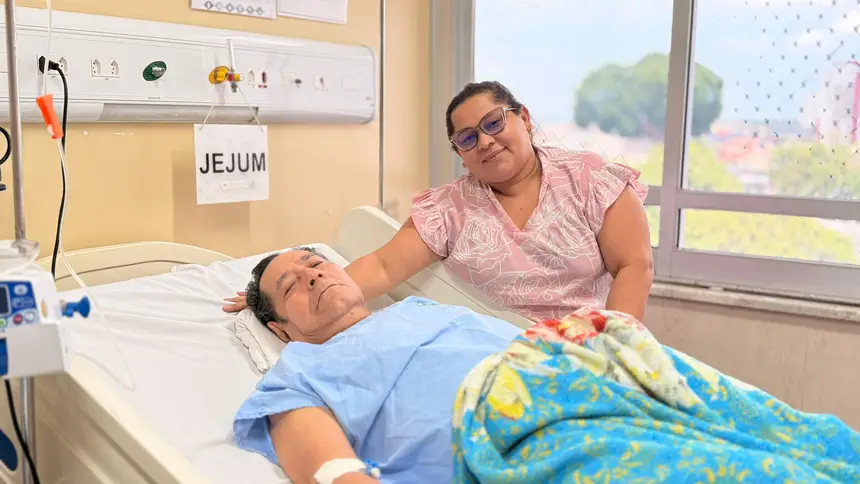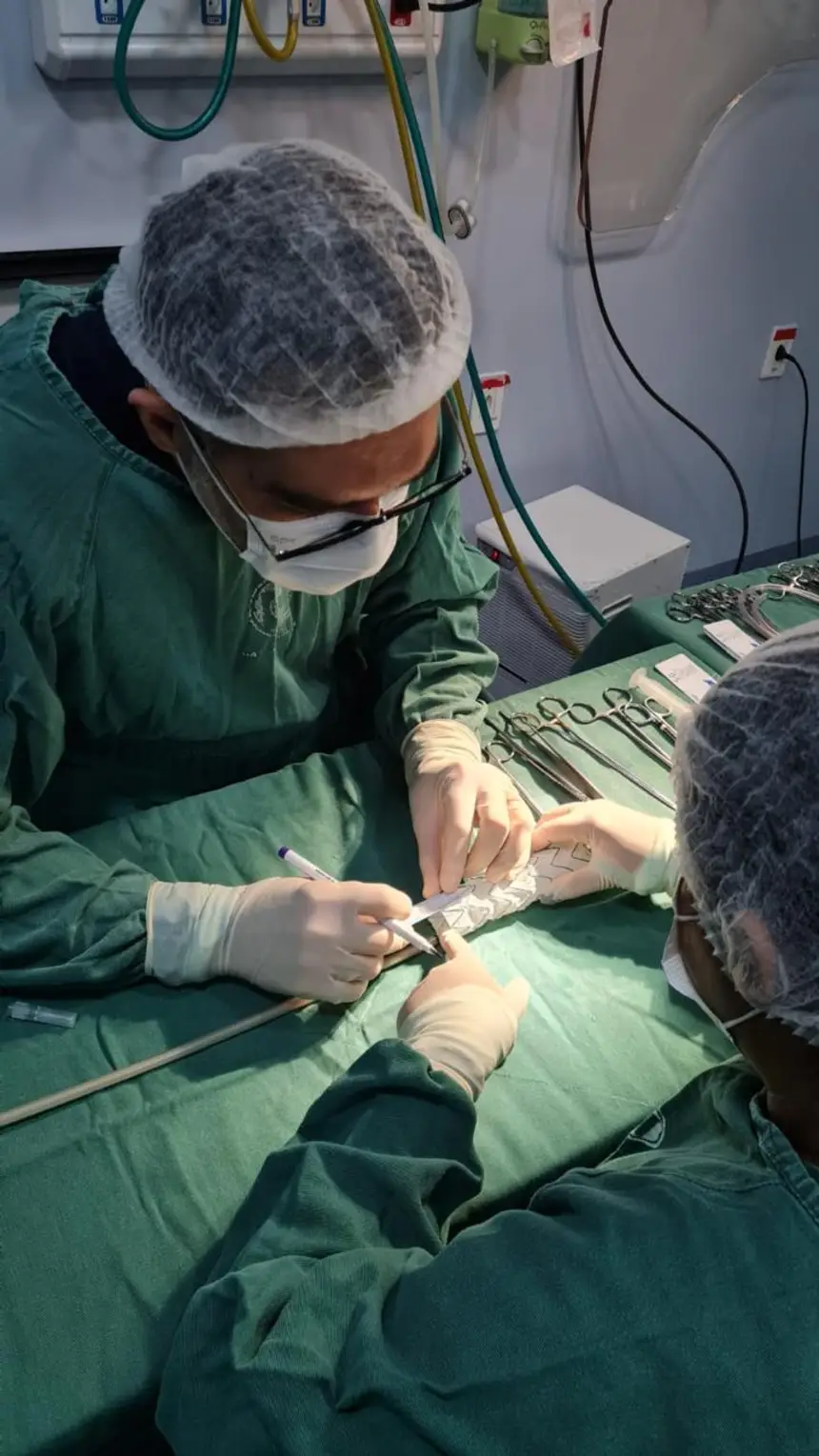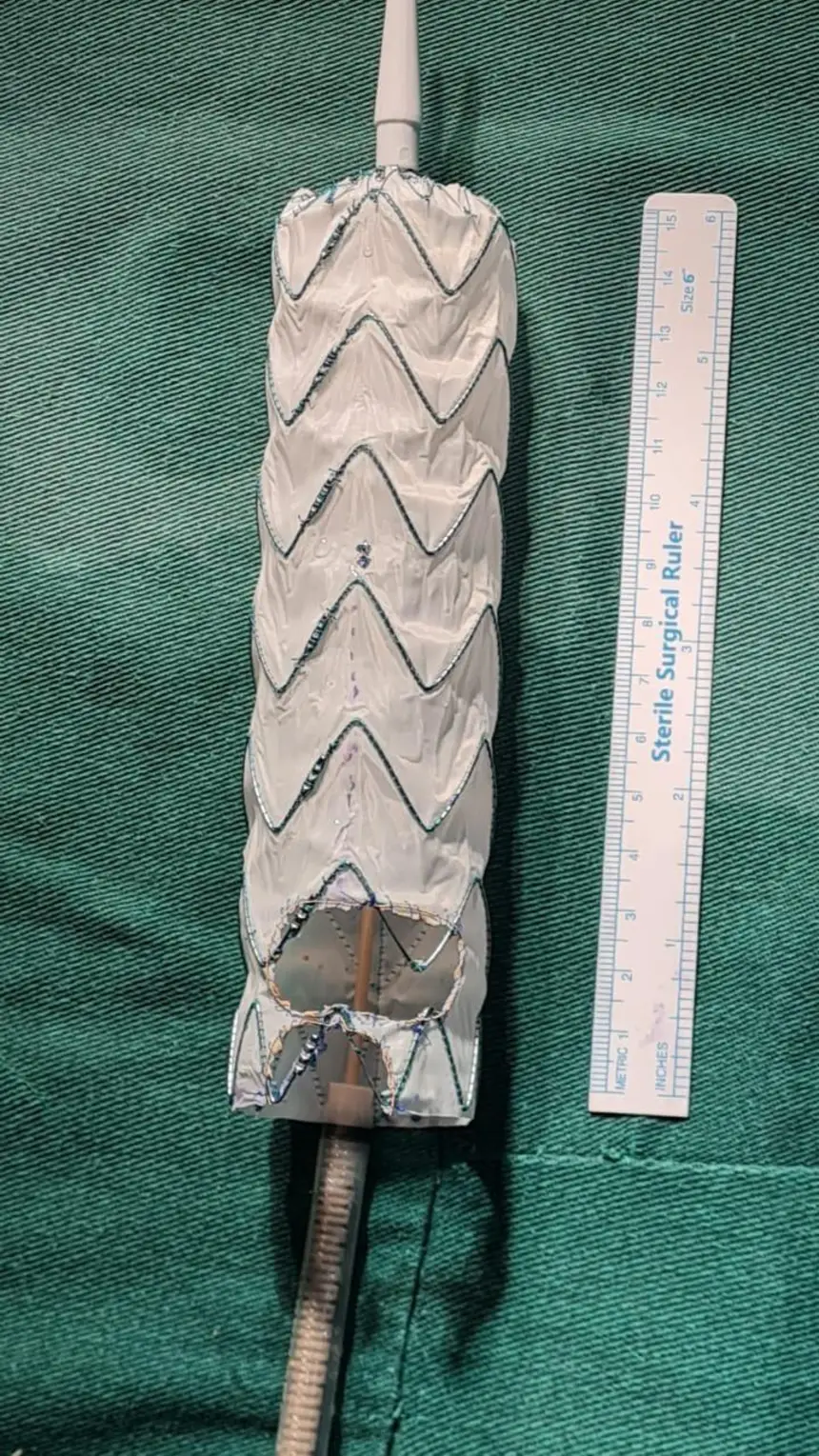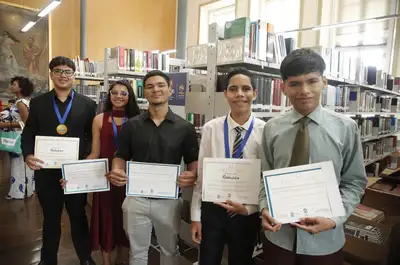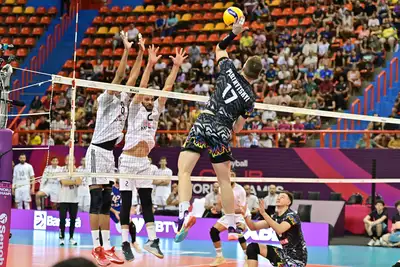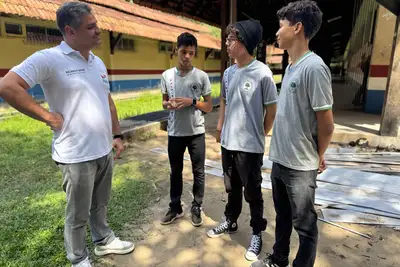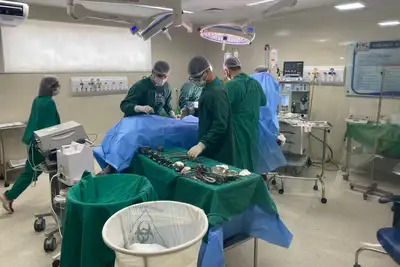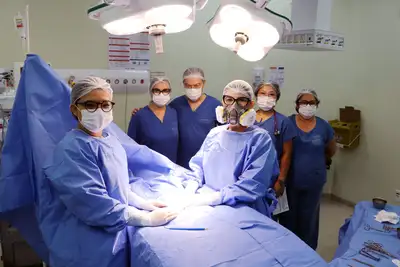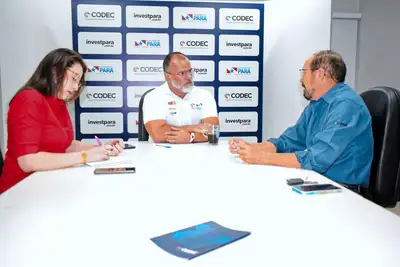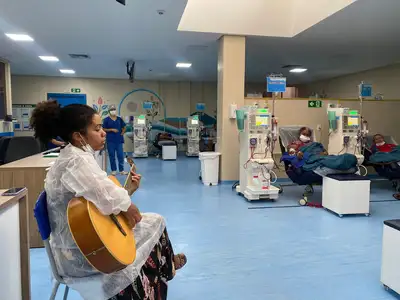HC performs unprecedented procedure to treat aortic dilation, the body's main artery
Hospital de Clínicas is a reference in cardiology in the Amazon and innovates with a modern, high-complexity technique, expanding treatment options for SUS patients
The Gaspar Vianna Clinical Hospital (HC), a reference in cardiology in the Amazon, performed an unprecedented procedure to correct a thoracoabdominal aneurysm with a bench-made endoprosthesis, a high-precision endovascular technique that adapts the device to the patient's specific anatomical characteristics before implantation.
The thoracoabdominal aneurysm is an abnormal dilation of the aorta wall – the main artery of the human body – which runs through the chest and abdomen. This dilation weakens the artery wall and increases the risk of rupture, which can cause severe internal bleeding.
The endoprosthesis is a device similar to a flexible tube, coated with synthetic material, that is placed inside the aorta to reinforce its structure and restore normal blood flow.
Knowledge and safety - In the case performed at HC, the differential was the bench fabrication – a process in which specialists manually adjust the device outside the patient's body, based on images from tomography and angiography, customizing the fit and ensuring greater safety during implantation.
According to endovascular surgeon Adib Koury, who was responsible for the procedure, the prior adaptation minimizes risks, such as leaks or occlusions of visceral branches, which can compromise vital organs.
“This is a milestone for HC and for Pará. We managed to gather the technical conditions, the specialized team, and the necessary resources to fabricate a custom-made endoprosthesis, in the bench, with complete safety,” explained Dr. Koury, highlighting the pioneering nature of the technique.
The doctor emphasizes that the innovation reinforces HC's role as a public teaching and high-complexity research hospital, linked to SUS, which constantly seeks to improve practices and expand access to advanced procedures.
“When we manage to develop this type of technique in a public hospital, we show that it is possible to offer the most modern and safe in cardiovascular medicine, benefiting patients who previously needed to be transferred or would not have access to this type of treatment,” adds Koury.
Humanization and pioneering - The patient who underwent the unprecedented technique was João Pereira dos Santos, 66 years old, retired, living in Portel, on Marajó Island, who was closely accompanied by his daughter, Marta Miranda, 28 years old, a teacher.
Marta reports that her father had already been operated on at HC in 2020, when he treated an aortic aneurysm. After a few years of stability, new pains and tests revealed the need for a second, even more complex procedure.
“Dad was operated on in 2020 for an aortic aneurysm problem. He was fine, the procedure was done right here in the hospital. But in 2022 to 2023 we discovered again that the aneurysm was very extensive and that he would have to undergo a new procedure. We were advised to enter the regulation because this type of surgery was not available in Pará. We were waiting, but recently dad had a lot of pain and we had to come back to Belém,” reported Marta.
“He was treated in the HC emergency room, they admitted him and took care of him with great care, as always. Dr. Adib performed the procedure, which we know is very difficult, and told us it was the first of its kind done here at the hospital. Thank God dad is doing well, recovering, and will soon be home,” she added emotionally.
Teaching and research - About four months ago, HC created the Aortic Disease Study Group (GMDA), formed by professionals from the areas of endovascular surgery, vascular surgery, cardiac surgery, cardiology, and intensive medicine. The group was created to discuss complex clinical cases, analyze treatment strategies, and promote continuous updating among specialists.
The case of the thoracoabdominal aneurysm treated with the bench-made endoprosthesis was evaluated and discussed by the group before the surgery, reinforcing the importance of integrated work among different medical areas.
“This integration between specialties allows for a complete and careful analysis of cases, favoring safer decisions and more efficient results for the patient,” highlighted the surgeon.
The patient progressed well after the procedure, which was considered a technical success, and will continue to be monitored clinically and through imaging to track the evolution of the treatment.
With this achievement, the Gaspar Vianna Clinical Hospital consolidates itself as a regional reference in high-complexity endovascular procedures, strengthening the commitment of the Government of Pará to offer quality public health, humanized and innovative.


